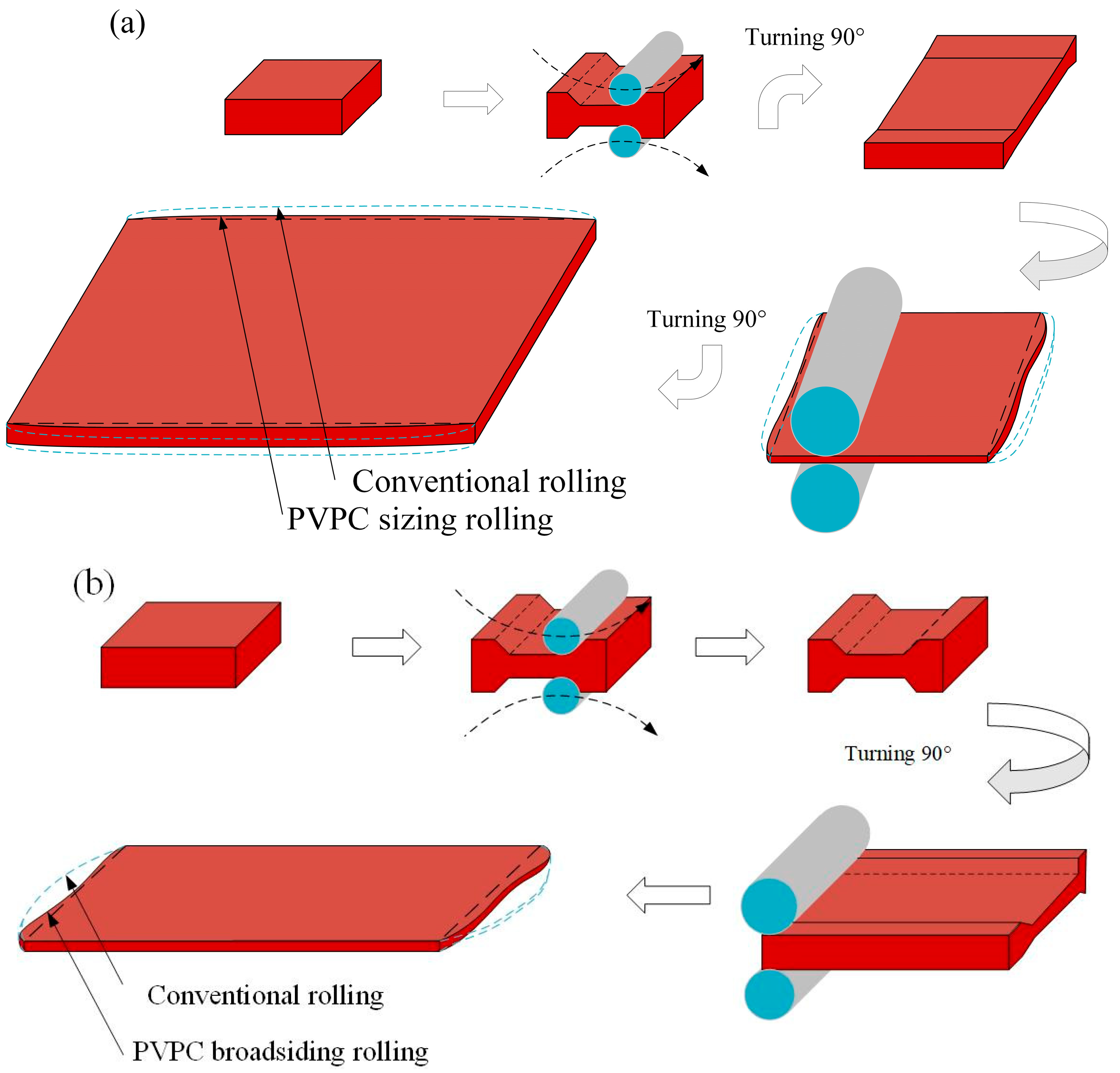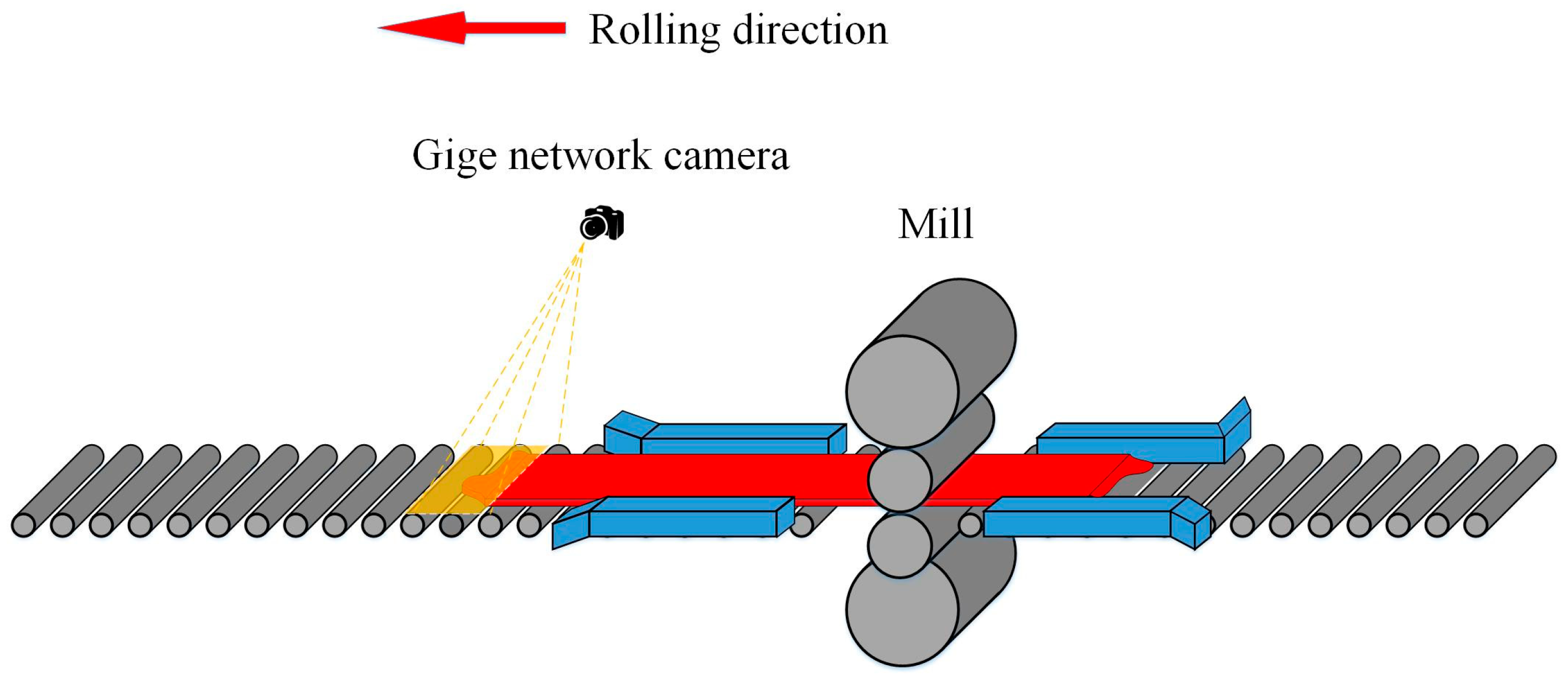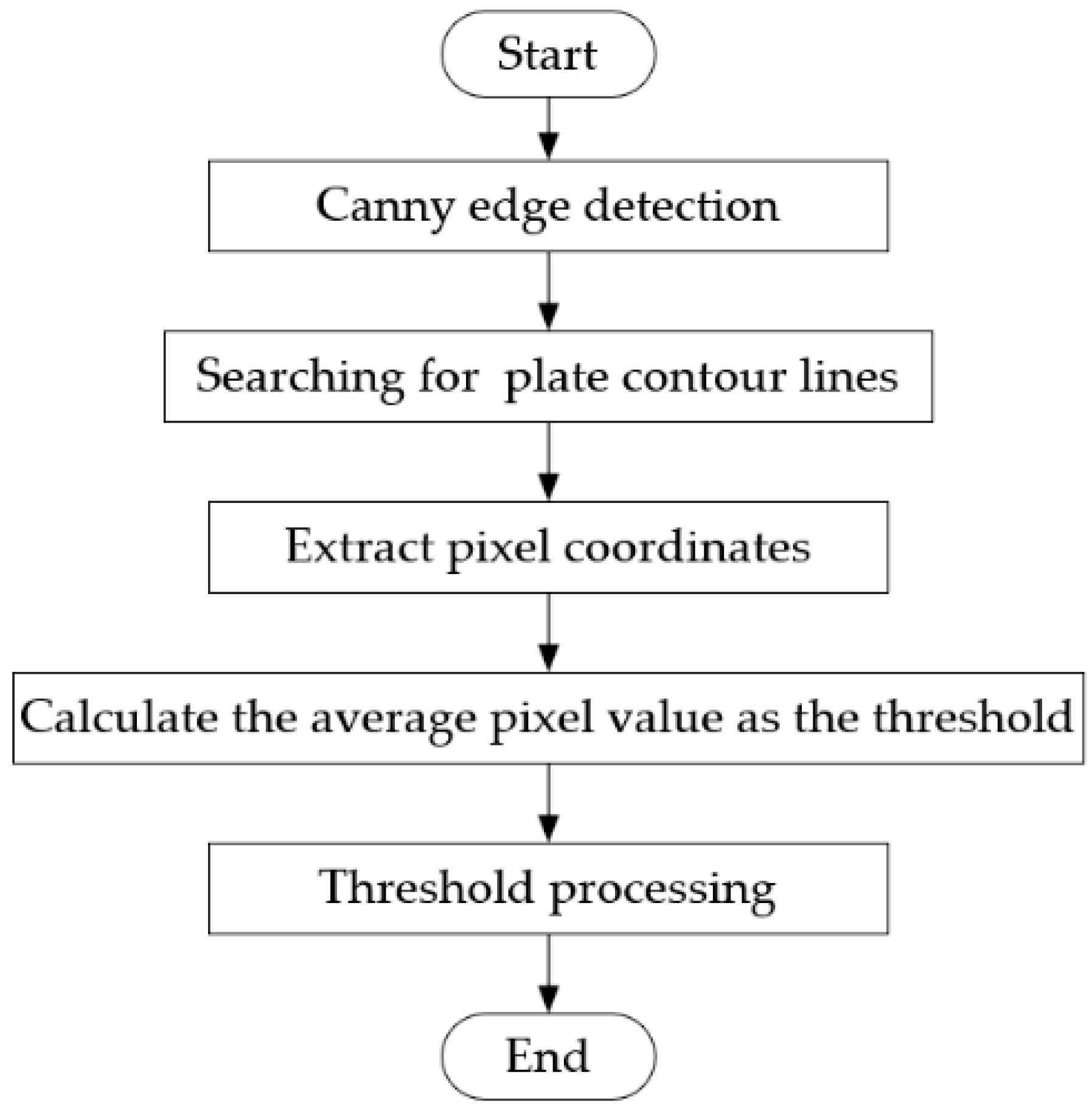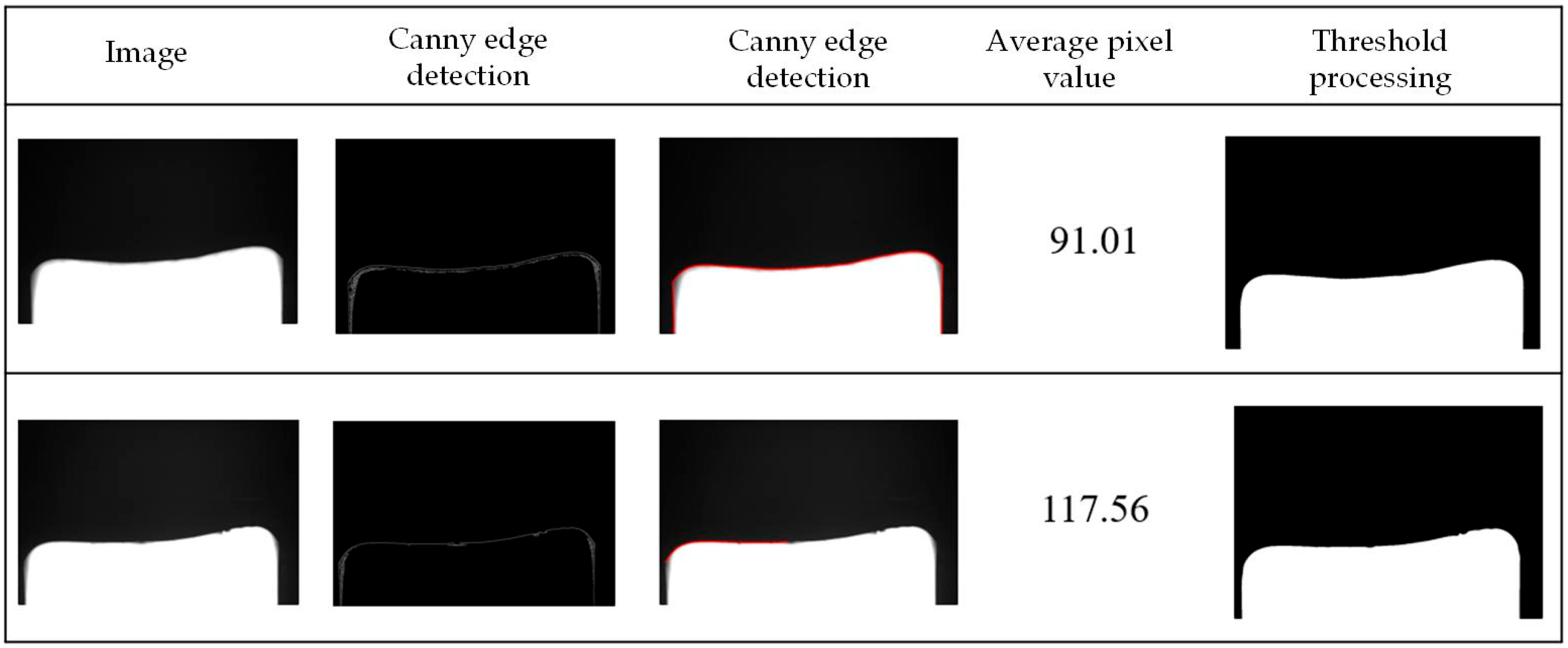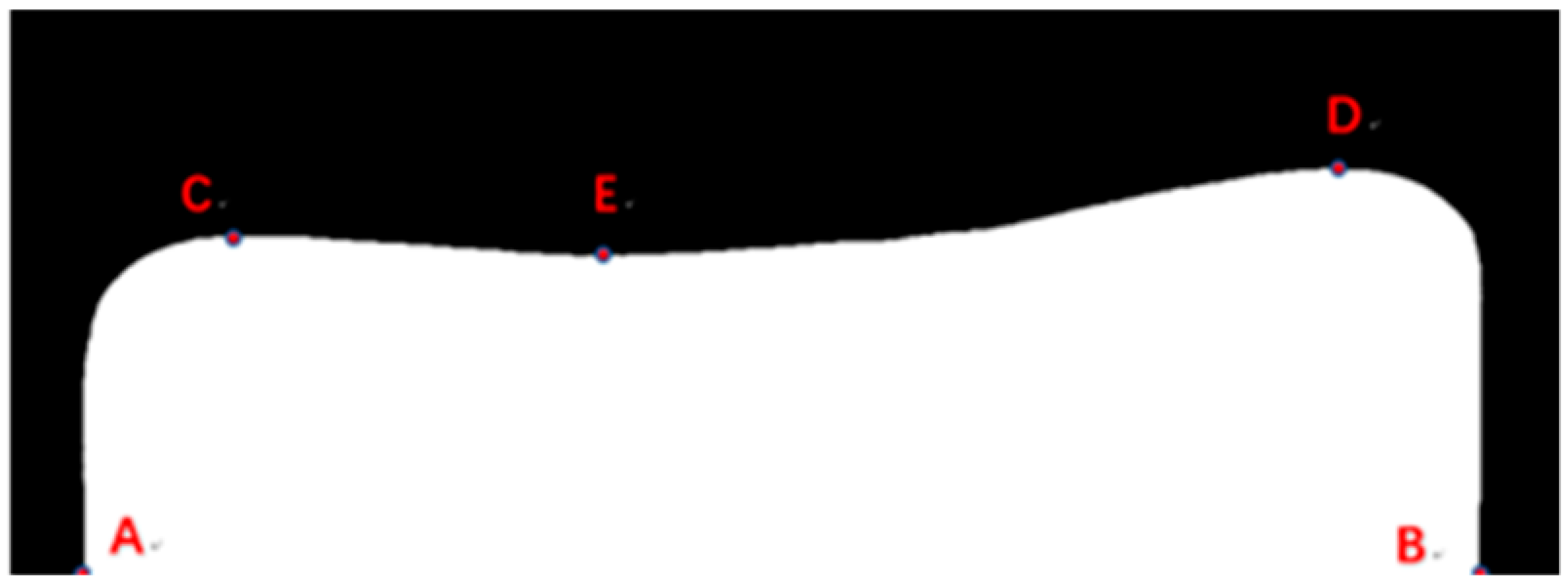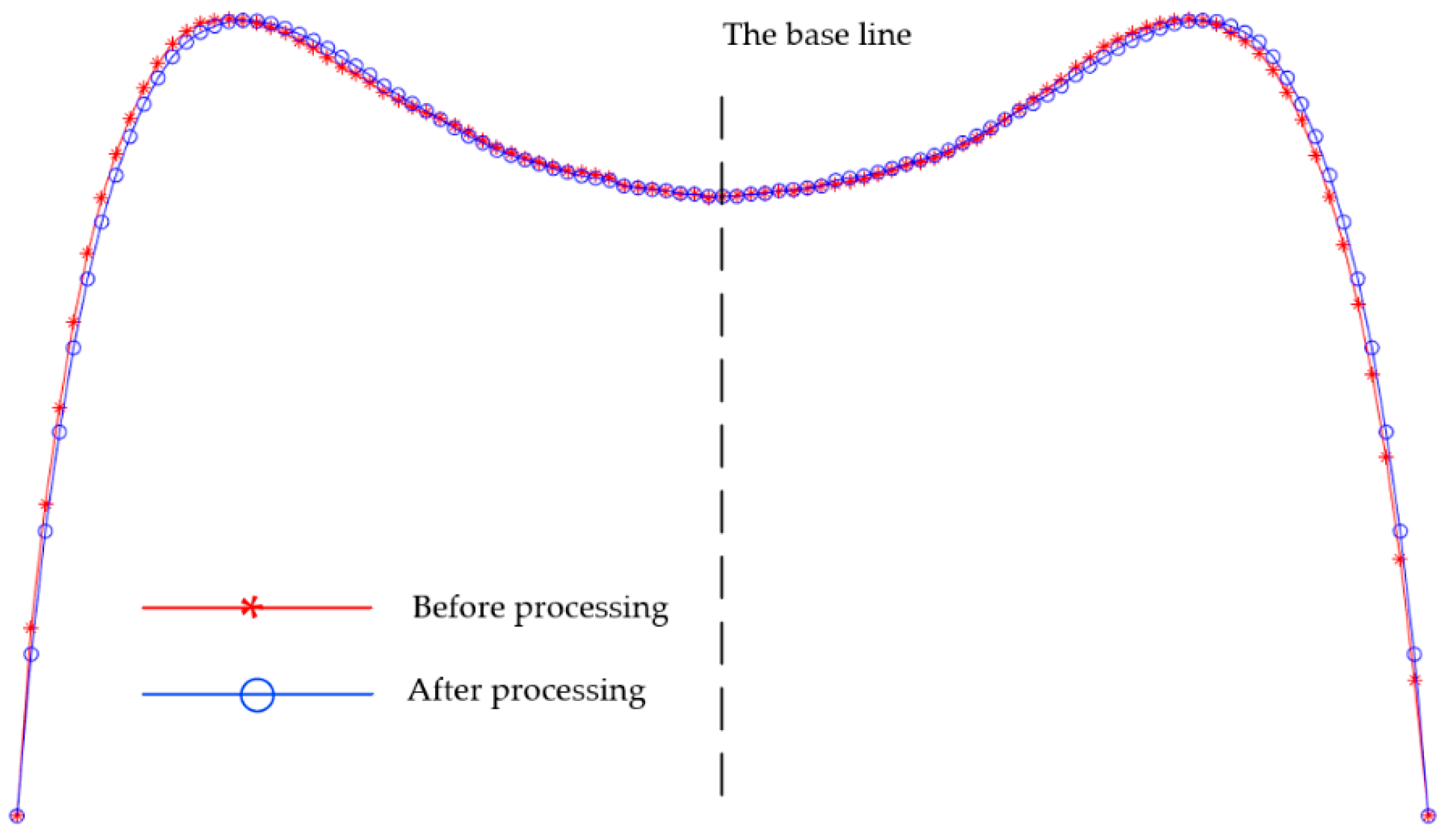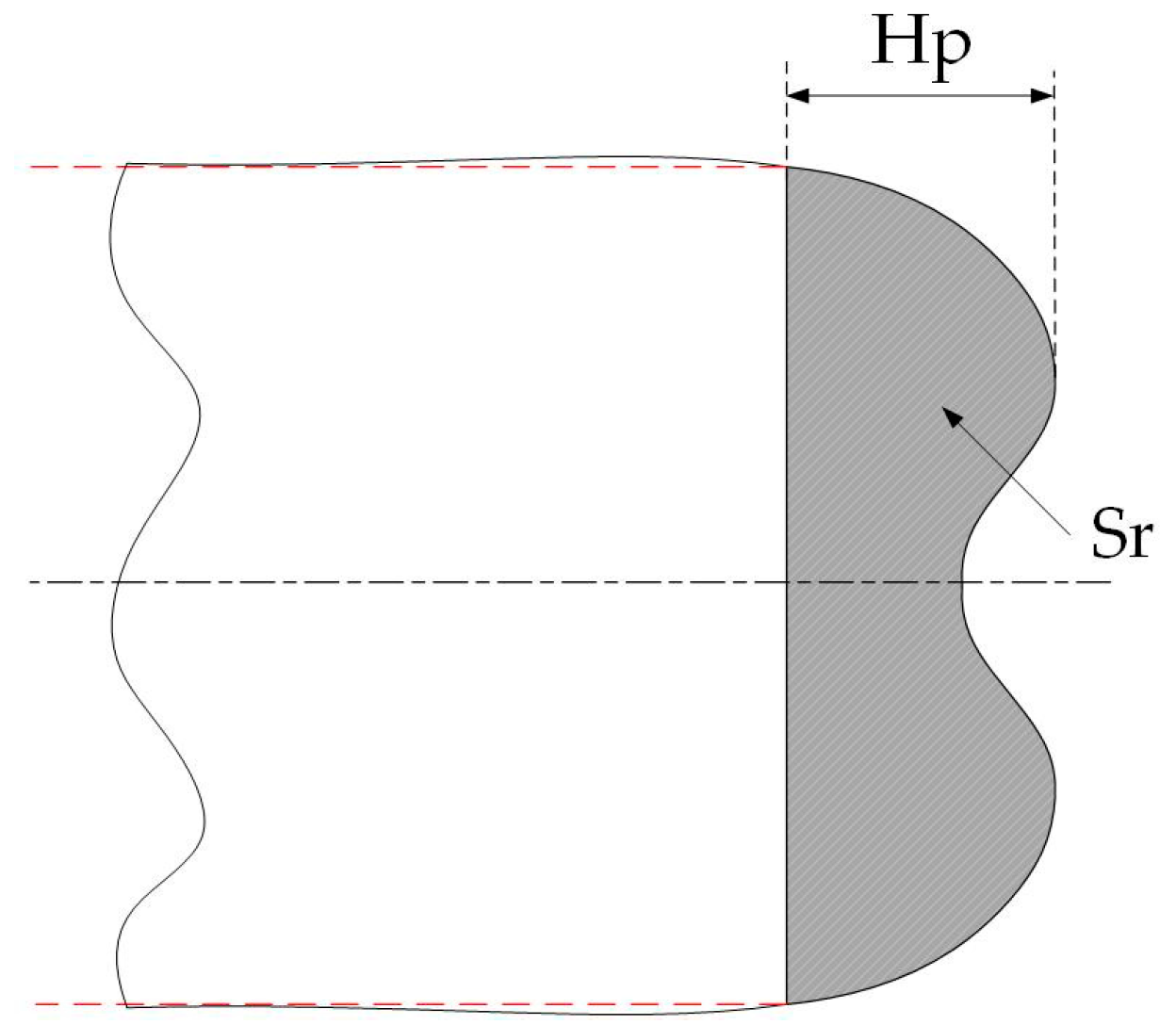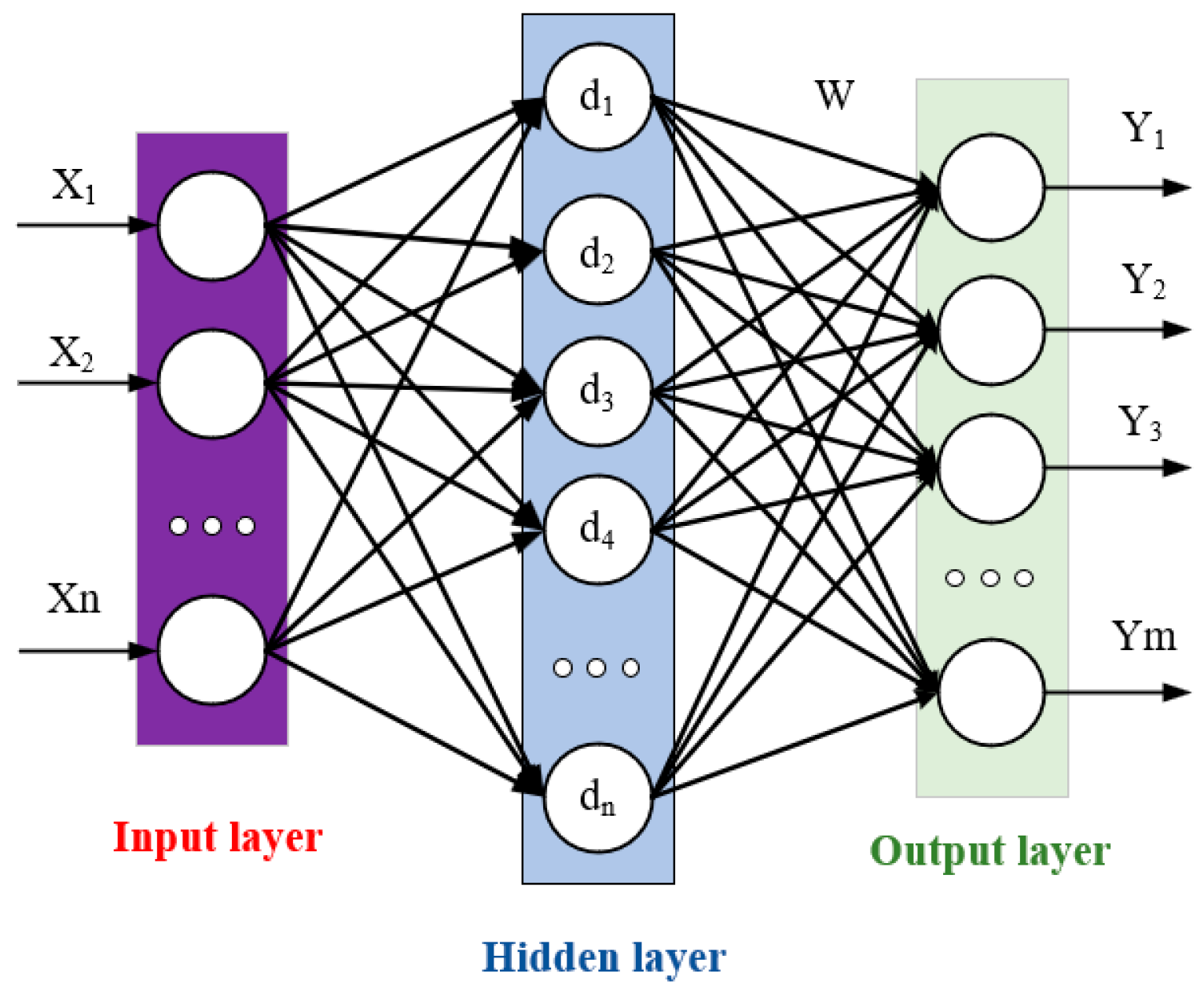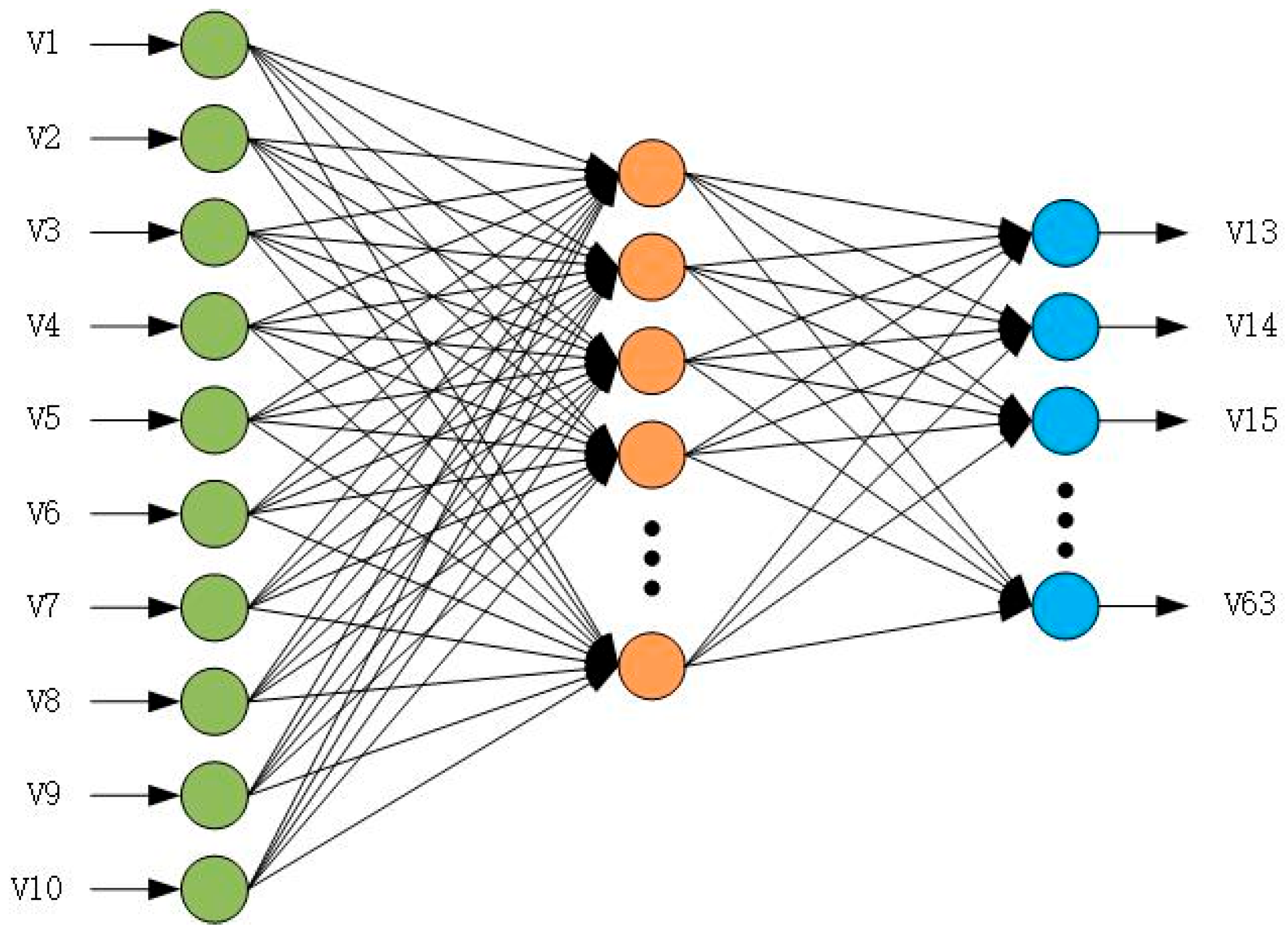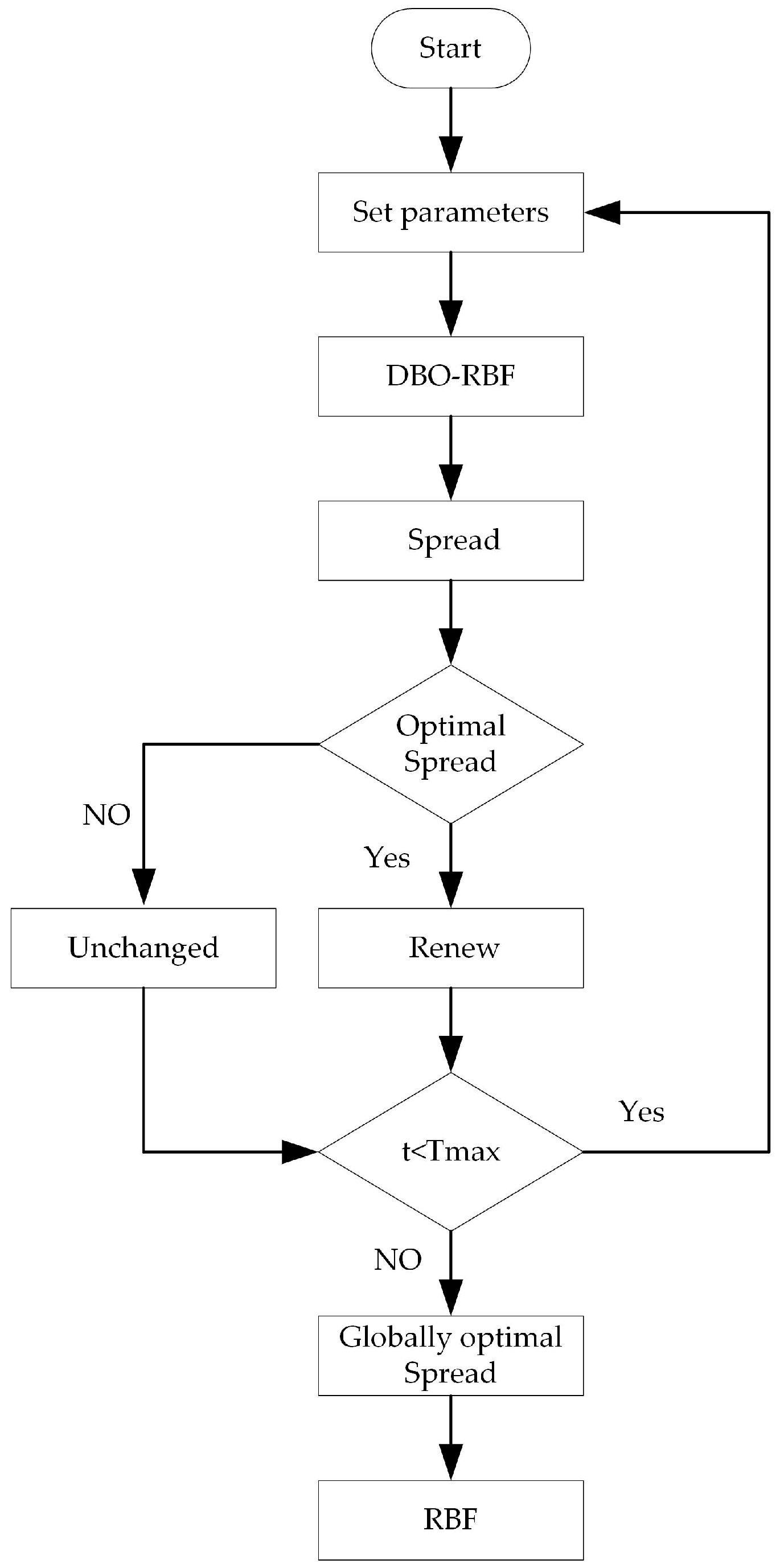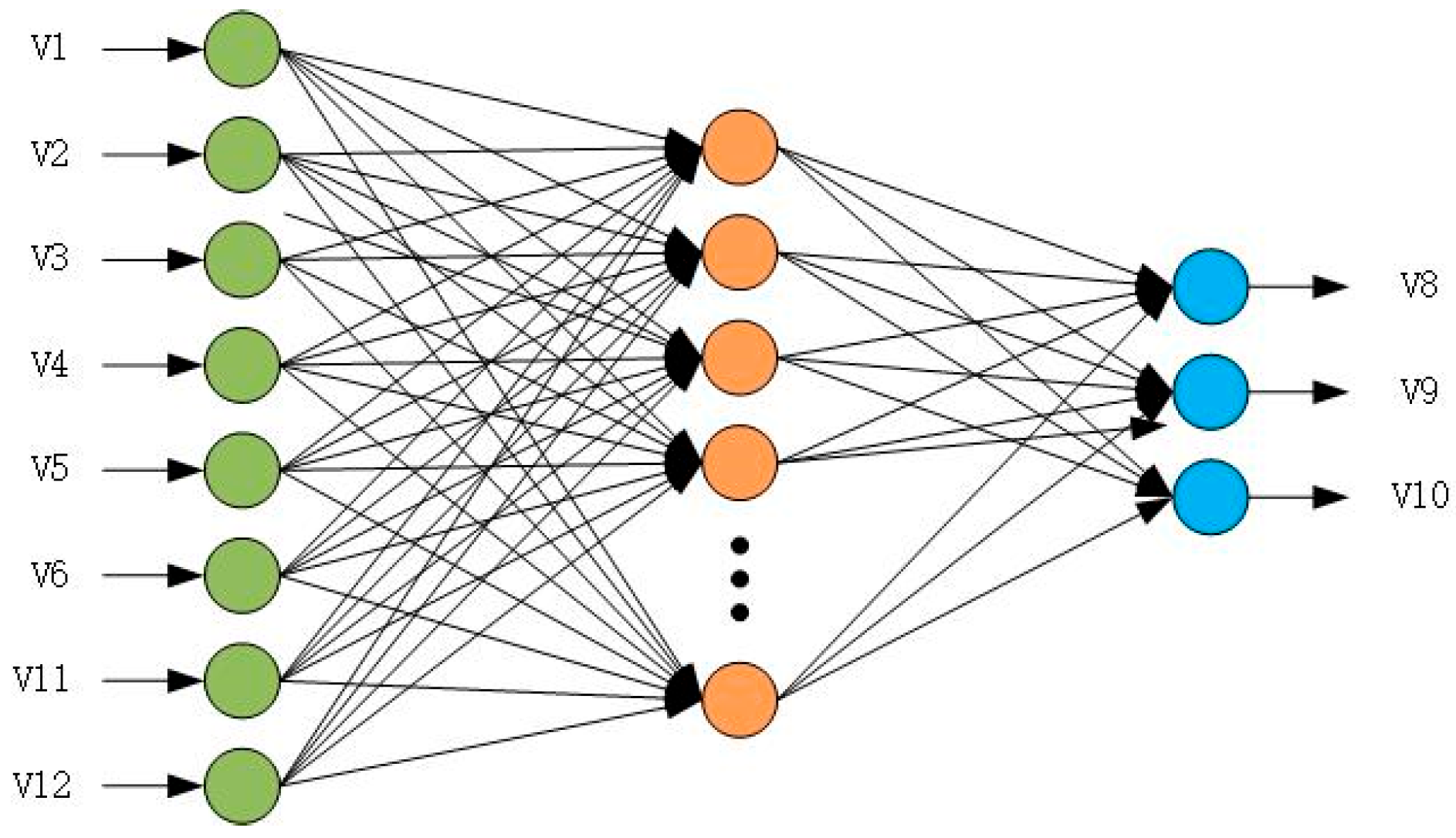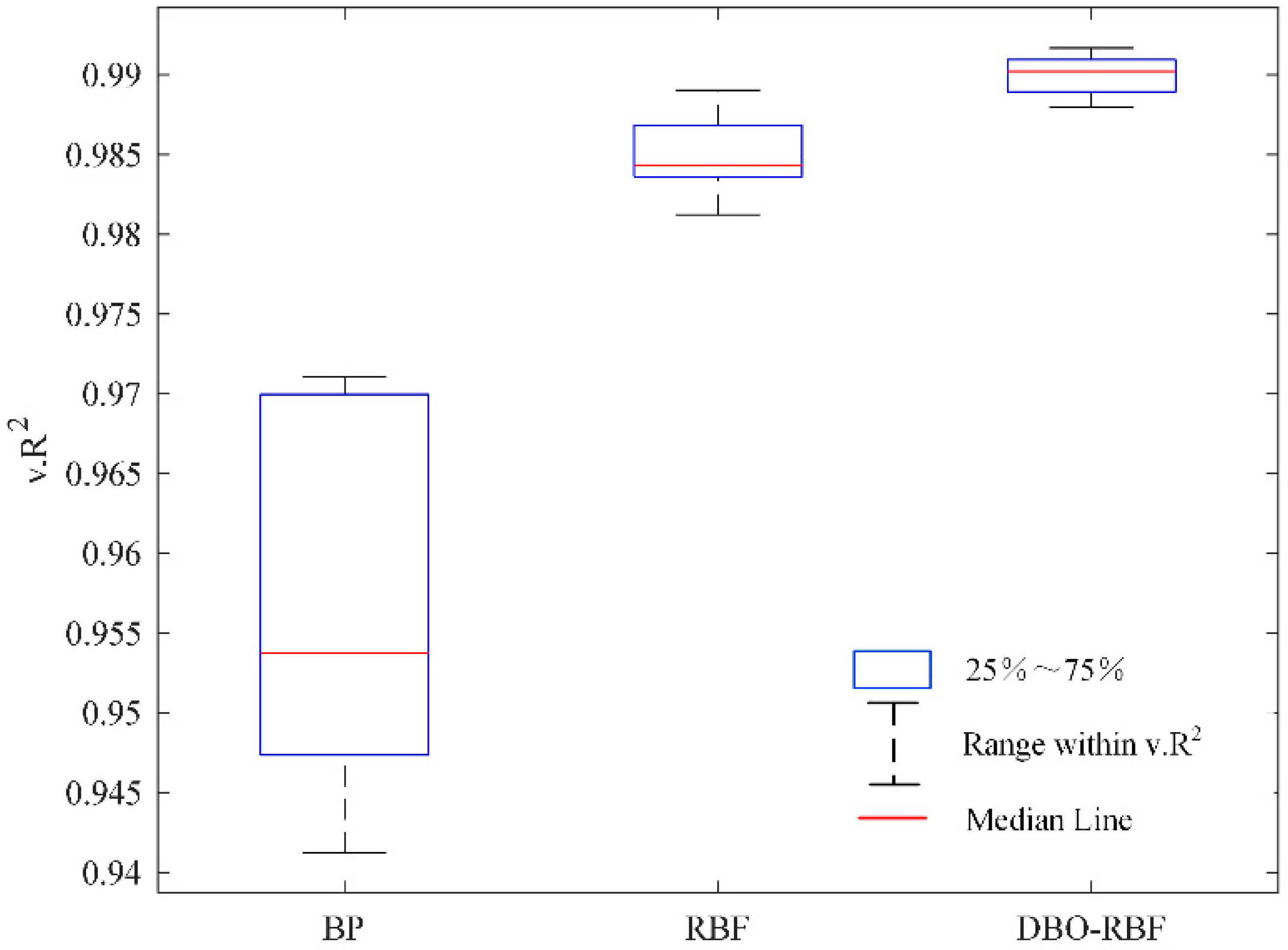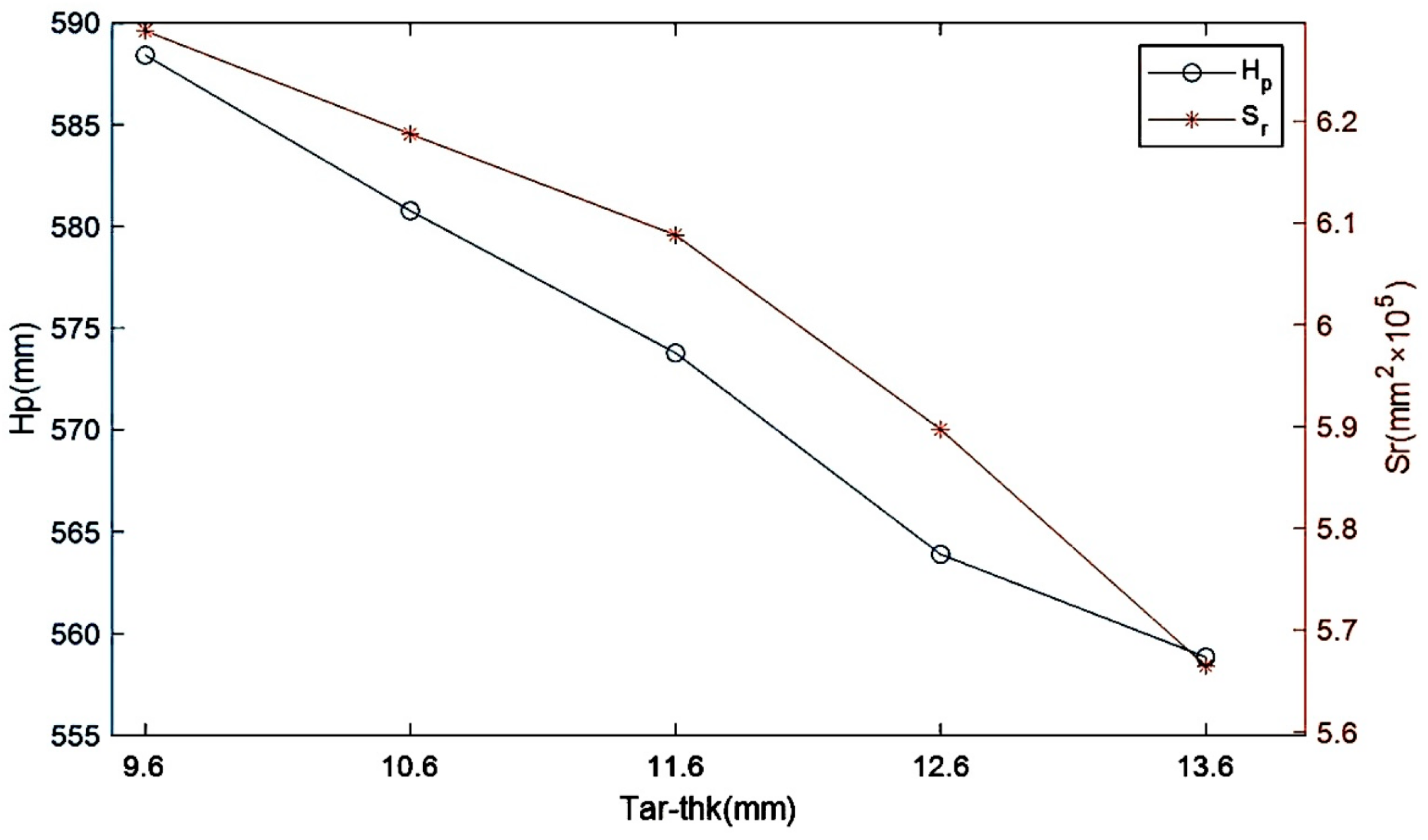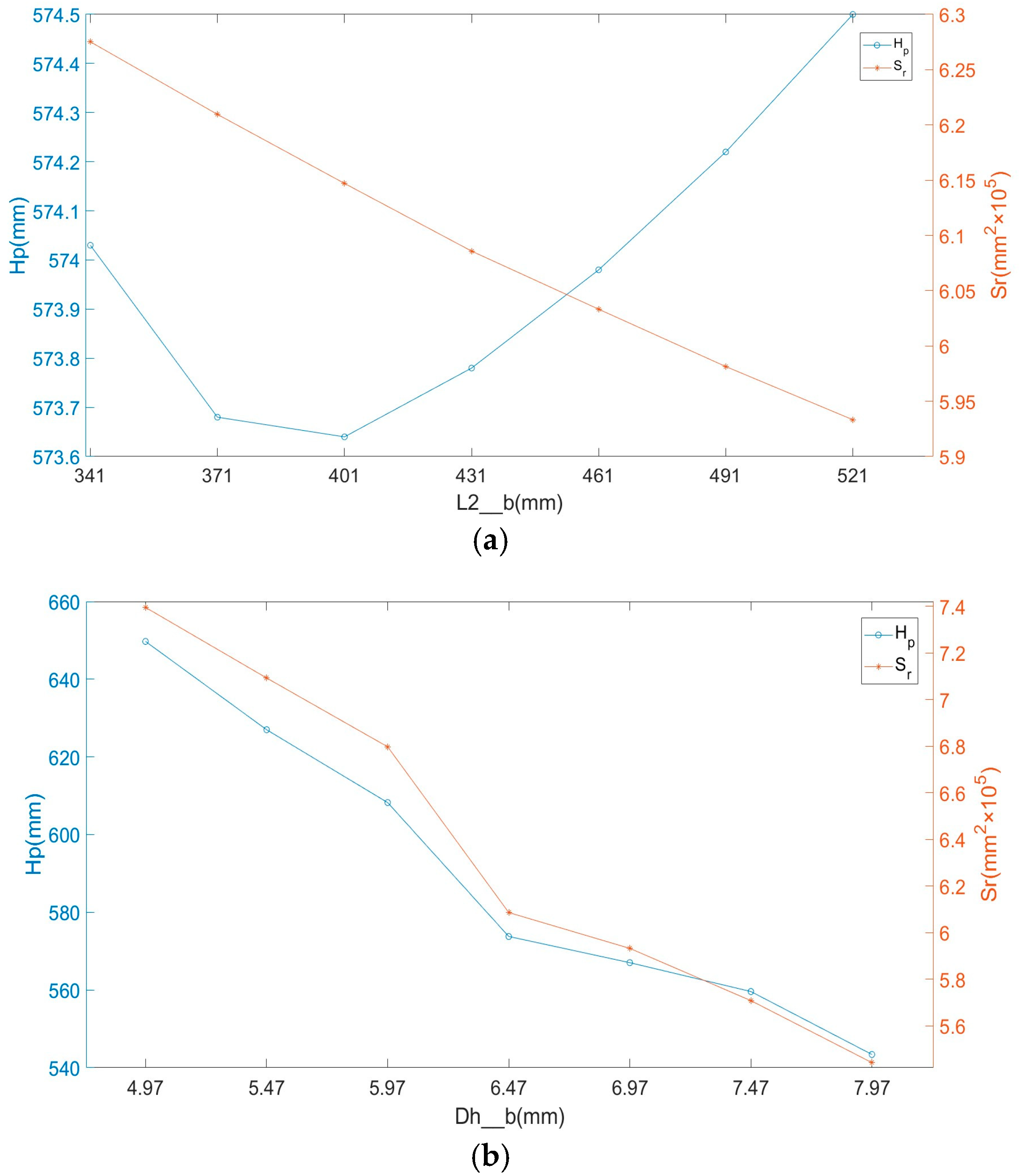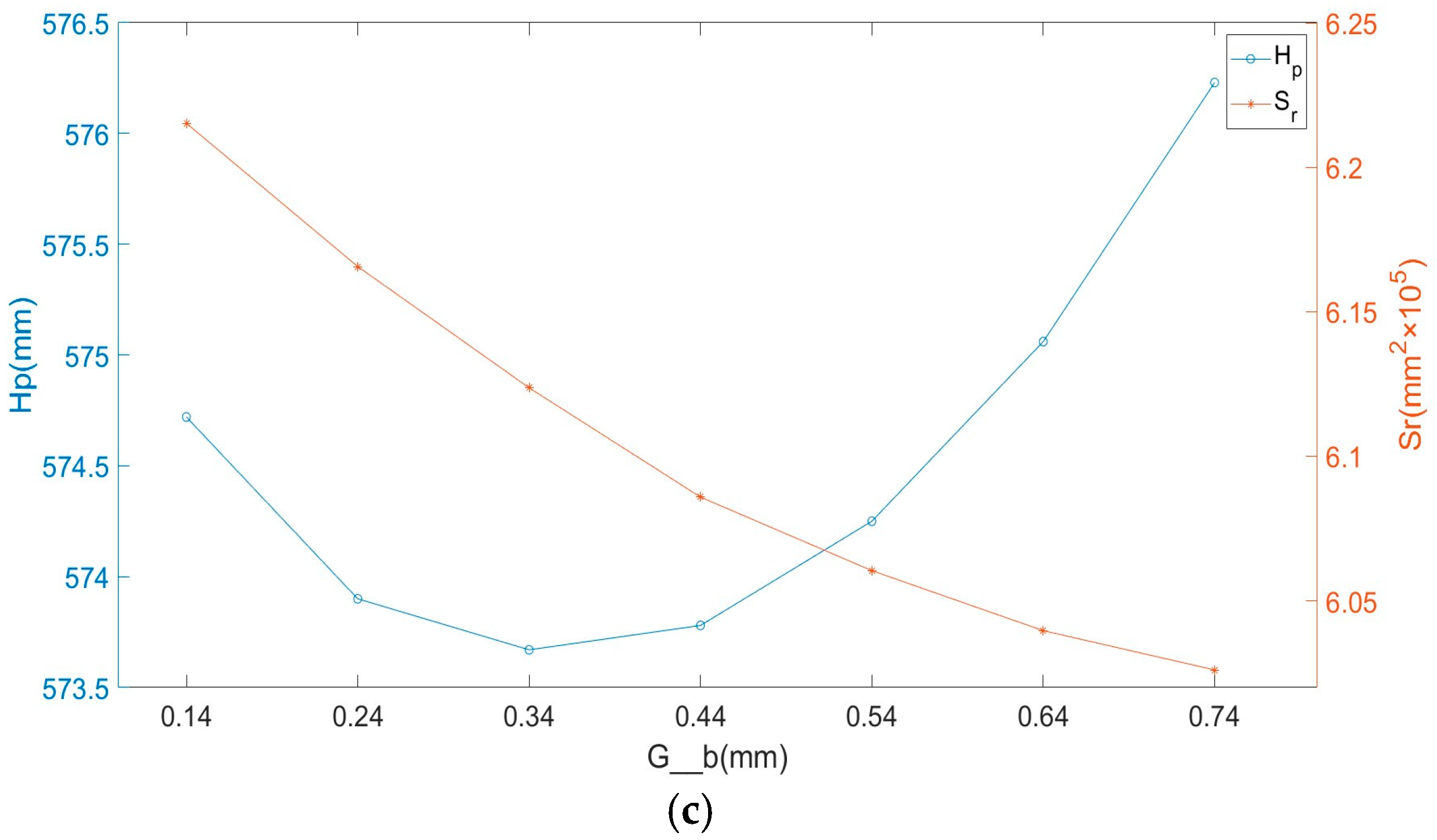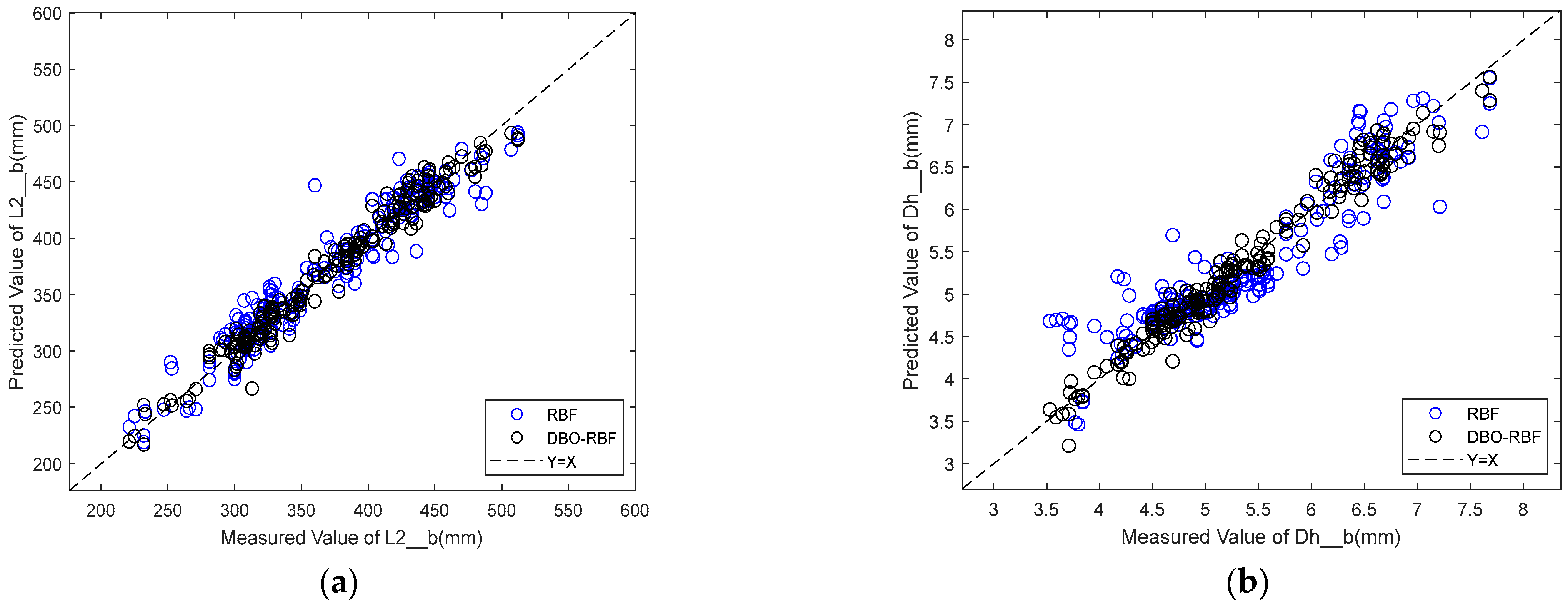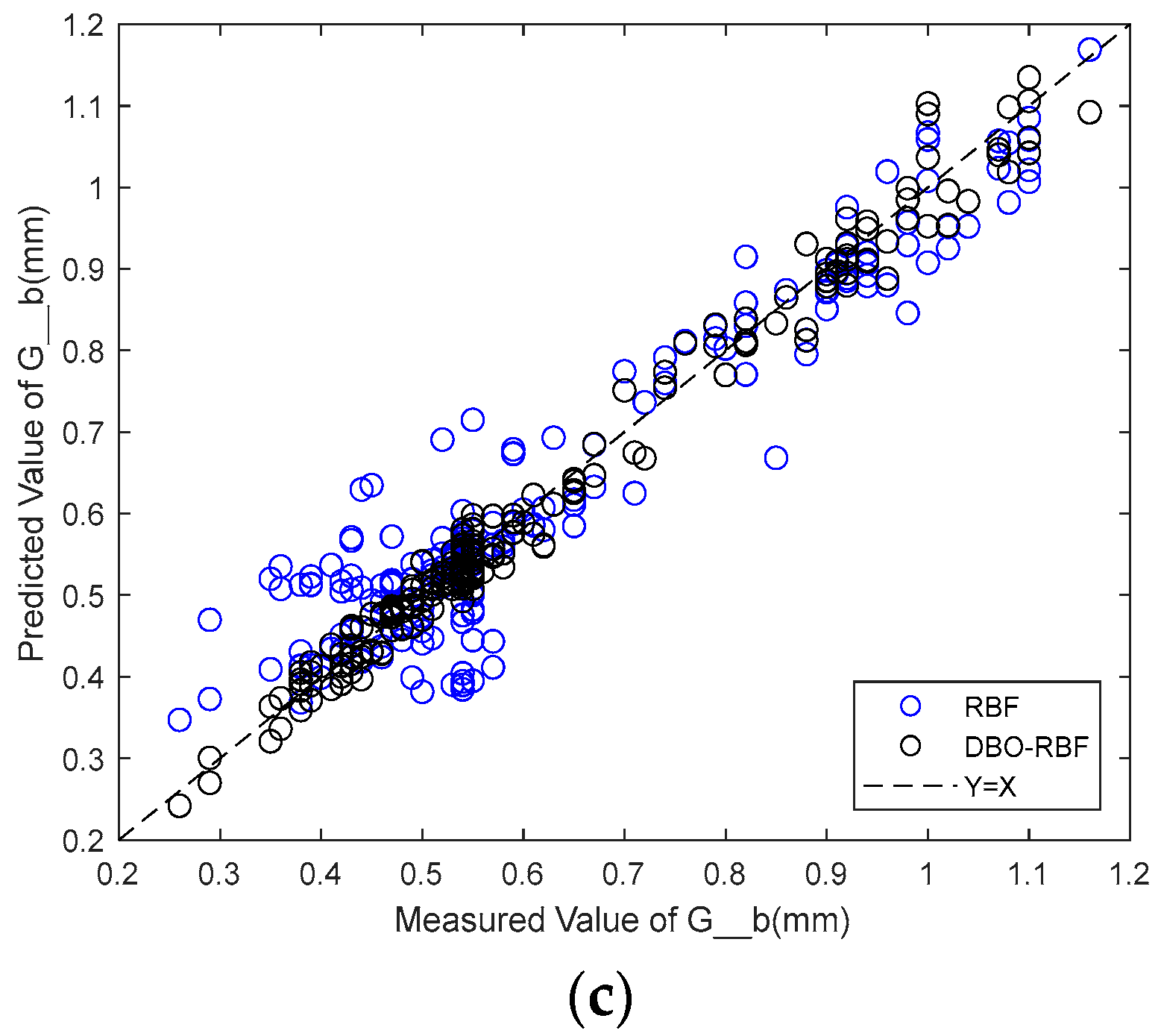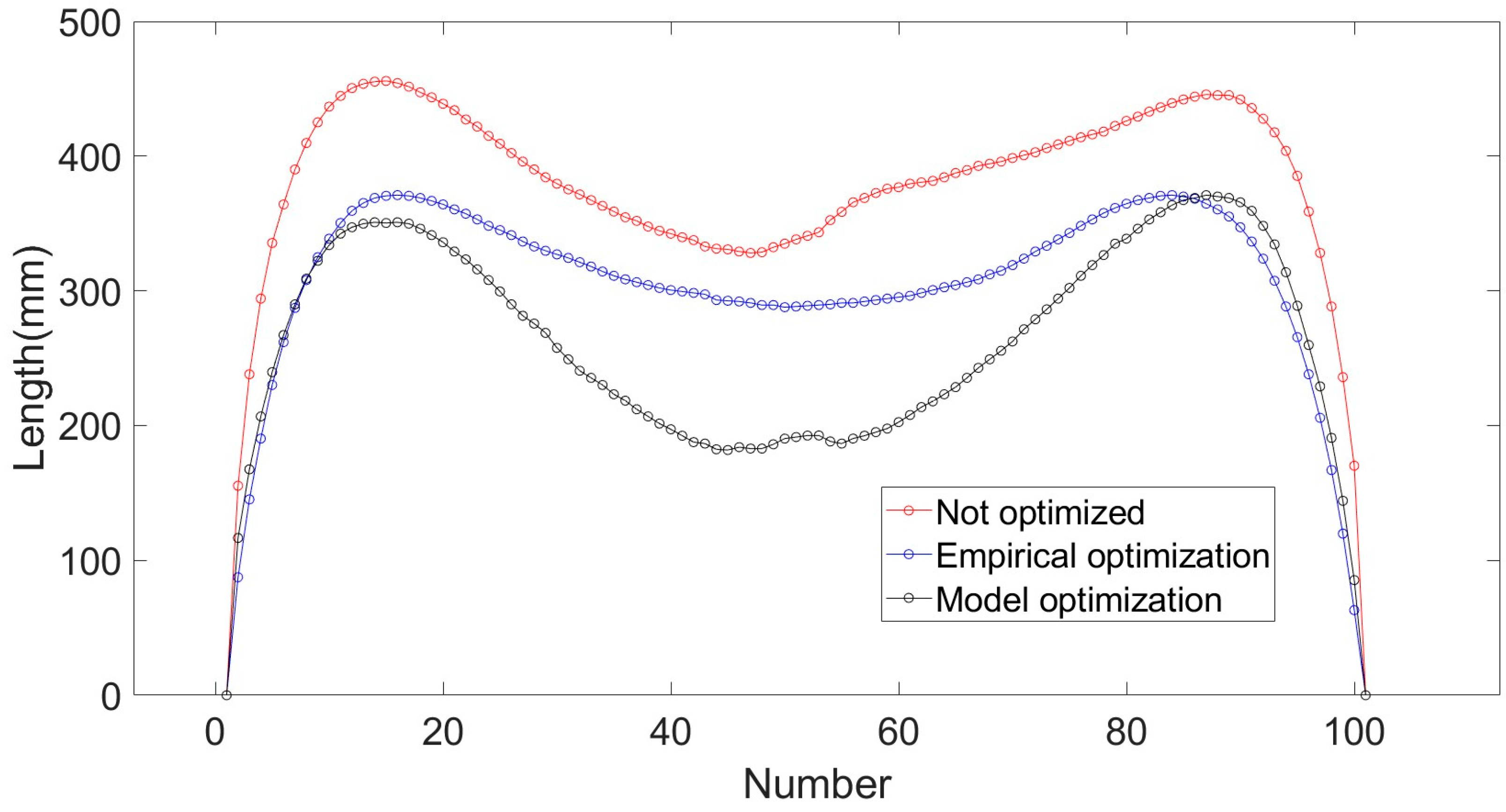1. Introduction
Plate products are essential key materials for national economic construction. At present, the competition in the iron and steel industry is becoming increasingly fierce, so improving product yield and reducing resource loss are key to enhancing the competitiveness of plate enterprises [
1,
2]. In the plate rolling process, the crop cutting loss has a great influence on the yield of the product. This is because plate rolling is a typical three-dimensional deformation process, where the metal flows along the rolling direction and the vertical rolling direction. The deformation law of the crop is more complicated, resulting in irregular crop patterns on the rolled plate. The plan view pattern is the core quality indicator of plates and affects the yield and production efficiency of the plate product.
The basic principle of the plan view pattern control (PVPC) process is to quantitatively predict the pattern of the rolled plate and then convert it into the abnormal distribution of the plate thickness given at the last pass of the sizing or broadsiding phase according to the “constant volume principle”. This abnormal thickness distribution is used to improve the rectangularity of the rolled parts in the later rolling stages, as shown in
Figure 1.
There are roughly three research methods for controlling the plan pattern of plates. The first is the analytical method, which is the earliest method of studying the deformation process of plate patterns. On the basis of the law of minimum resistance and the constant volume principle, the theoretical equation for three-dimensional metal flow can be obtained, which lays a foundation for the study of plan view pattern prediction of plates. However, in the derivation of these equations, it is necessary to make assumptions and simplifications, which will inevitably increase the model’s error. Moreover, in the plate rolling process, the irregular deformation regions of plates are difficult to express by strict theoretical models.
The second method is physical simulation and industrial testing. Based on theoretical models, this method involves carrying out physical simulation experiment in the laboratory and industrial experiments. The simulations and experimental results are used to improve the accuracy of the model. Hiroyasu Shigemori et al. [
3] proposed a technique that uses a locally weighted regression model and performs parameter identification, and applied this method to plan view pattern control of plates. Yao et al. [
4] established a prediction model and a control model, which reduced the shear loss of the product. Han [
5] optimized the regression model of plan view pattern margin prediction and plan view pattern control and reduced the loss of head, tail, and edge. Deng [
6] improved the prediction and control model of plan view pattern control of plates. Ni [
7] combined the sequential quadratic programming (SQP) optimization algorithm with prediction models and control models of plan view pattern control. These studies improved the online application of PVPC function. Shen et al. [
8] developed a mathematical model of PVPC and achieved good results in actual production.
In recent years, with the development of computer science, finite element simulation technology has become increasingly advanced, and it has been widely used in rolling process simulation. Liu [
9] proposed the mathematical model of plan pattern prediction and control, based on finite element simulation. This model provides a theoretical basis for plate production. Liu [
10] verified that the finite element simulation method can be used to study the PVPC process. The calculation results can provide a theoretical reference for the selection of rolling parameters. He [
11] verified the accuracy of single-pass simulation using finite element tools. Zhao et al. [
12] developed a full restart method based on the capabilities of the finite element software ANSYS LS-DYNA (
https://www.ansys.com/products/structures/ansys-ls-dyna, accessed on 7 January 2024), and built a PVPC model to predict the plan view pattern of each roll pass. Gu [
13] established the simulation rolling model of vertical–horizontal rolling. Yao et al. [
4]. established a prediction and control model of plan view patterns. Ruan et al. [
14,
15]. developed a 3D rigid plastic thermomechanical finite element model to study the nonuniform plans of plates during hot rolling and improved the rectangularity of plates. Horie et al. [
16] investigated the effect of dog bone width on the end profile of plan view patterns of plates in DBR. This study further explained the effects of plate size and dog bone height on the length of ‘fish tails‘. Ruan et al. [
17]. established a three-dimensional rigid plastic finite element model of vertical–horizontal (V–H) hot rolling and elucidated the formation law of dog bone plans during vertical rolling and of width expansion behavior during horizontal rolling. Jiao et al. [
18]. simplified the finite element simulation results, accurately calculating the forward slip and the time of the rolling process for the online application. Ding et al. [
19] used the controllable point setting method to control the plan view patterns and used the finite element method to analyze the influence of different setting points and setting distances on the rectangularity of the finished product. However, the accuracy and reliability of the finite element simulation method often depend on the setting of rolling process parameters, modeling level, and boundary conditions, and whether the simulation conditions of load conditions are in accordance with the reality. Therefore, the accuracy of the model varies greatly.
In the context of Made in China 2025 and Industry 4.0, digitalization is in an important position. Digital Twins are thought of as a digital counterpart to physical production artefacts. Therefore, to be useful for every purpose in their environment they have a high resolution [
20]. However, the realism of a digital twin benefits from data streams sampled at a sufficiently high frequency. This is especially true if the models used in the virtual replica are of the black box data driven type. These models are often based on machine learning algorithms with neural networks, thus, requiring rich data for training [
21]. Gasiyarov, V.R. et al. [
22] proposed a method for defining the two-mass system model parameters using the oscillograms obtained in the operating and emergency modes. The method was developed for the horizontal stand drives of a 5000 mm plate mill and is supported by numerical examples which have been applied to the development of an observer of the elastic torque of the rolling stand’s electromechanical system. Bassi, A et al. [
23] developed a predictive model using a feed-forward neural network to determine the hardness values and phase fraction percentages of steel during heat treatment under specific cooling conditions. Their study enhanced the quality and performance of the resulting product.
The digitization of the iron and steel industry also provides a new idea for the research of plan view pattern control of plates. It is necessary to solve the problem that the traditional mechanism model of PVPC has reached a bottleneck. Some researchers have studied the plan view pattern control of plates by using machine learning algorithms. Zhao [
24] applied the extreme learning machine algorithm to predict the length of different sections of the head curve of rolled pieces and optimized the intelligent prediction of the plan view pattern of plates. Based on a large quantity of simulation data from finite element simulation, Wang [
25,
26] established an intelligent prediction model of metal flow in the rolling process with the BP neural network, which has considerable accuracy and effectiveness. However, the data come from a large quantity of simulation results. Dong [
27] developed an ISSA-ANN (BP) plan pattern prediction model based on actual production data from the field. An improved Sparrow search algorithm is used to optimize the initialization of weights and biases in BP. However, the number of hidden layers and nodes in the BP neural network is artificially set, so lacks the theoretical support of a model.
At present, there have been few studies on the application of machine learning algorithms to predict the plan view patterns of plates. This is because machine learning algorithms require a large number of data samples and the quality requirements for data samples are very high. Machine vision technology can effectively solve the above two problems. At present, machine vision technology has been applied in the rolling field. Schausberger et al. [
28] proposed a way to track plates using cameras. Kim et al. [
29]. proposed a plate plan view pattern measurement system based on a plan array camera and corresponding image mosaic algorithm. Kong et al. [
30] proposed a method for measuring the lateral bending of plates using a line array camera.
At present, the image detection devices of plate production lines are normally situated at the finishing area, which cannot provide timely feedback regarding the effect of PVPC. Therefore, because the detection conditions of mill areas are complicated, it is necessary to study the development of image recognition algorithms.
In this paper, according to the requirements of the digitization of plan view pattern control, a machine vision detection device is installed near the mill area and an image processing algorithm is developed to obtain high-quality data according to the actual conditions of plate pattern detection image processing. A combinational optimization machine learning algorithm is proposed for a digital model of plan view pattern control and the digital model is applied to the actual production for verification. In the second section, the development of machine vision detection and image processing algorithms are introduced and the data sets of digital models are established. In the third section, a digital model of PVPC is established by combining DBO and RBF neural network machine learning algorithms. In the fourth section, the influence of plan view pattern control parameters on the irregular pattern of the crop is analyzed, and the PVPC control model is established. Also, the digital model effect is verified at the production site.
